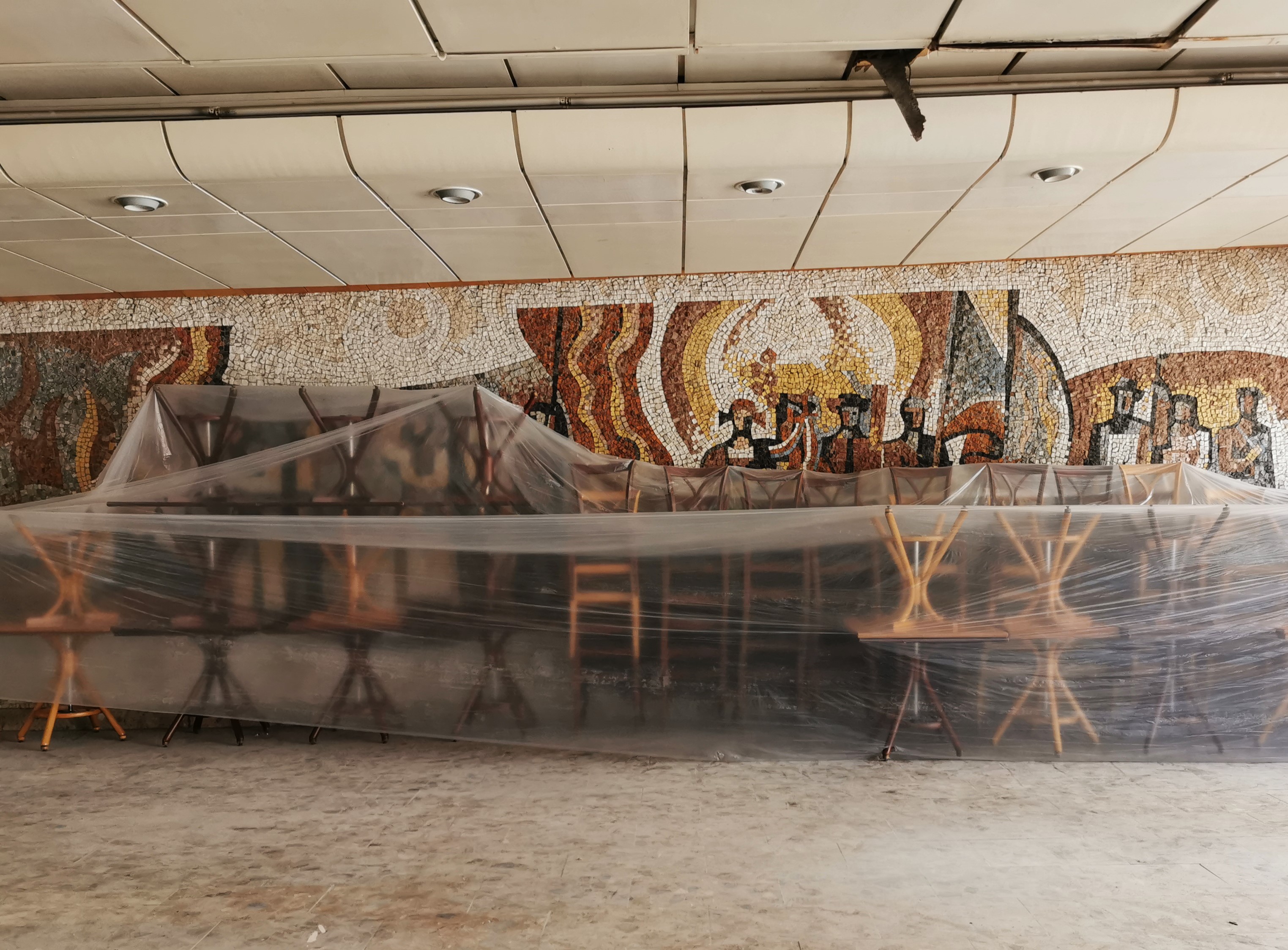‘Socialist Modernism’ Online: A Research Postcard
by Vik Loveday
23 December 2022

Lately I’ve been thinking about what it means to collect and to categorise. My current research explores perceptions of communist-era architecture and public art in Central Europe: for the past year over Instagram, I have been following content related to ‘socialist modernism’ (or #socmod), sharing my own photographs, speaking with users about the stories behind their profiles, and visiting some of the objects depicted on social media feeds. My aim is to make connections between this virtual world of Instagram aesthetics and the real-world practices of activists and organisations seeking to protect twentieth century buildings and artworks from the threat of delapidation, destruction, and amnesia.
What is the wider significance of seeking out mosaics, sculptures and concrete behemoths? And why share a photo of a communist-era relic? While Instagram facilitates a type of digital archiving, as well as the possibility of ‘niche’ curation, this does not necessarily mean that the images themselves – or indeed the offline practices of #socmod enthusiasts - are easily categorised. Certain Instagram trends have rightly been subject to criticism: de-contextualised and posted for purely aesthetic impact, ‘concrete clickbait’ stimulates a surface engagement with de-policised objects. Yet a new generation of activists are seeking to document, protect and restore these relics as valuable cultural assets.
Categorisation is at the heart of the Czech scholar and sculptor Pavel Karous’s work Vetřelci a Volavky [Aliens and Herons]2 - now a social media hashtag in itself. The title eludes to the other-worldly - sometimes-strange yet often-beautiful - works of public art that can be seen across former Czeckoslovakia and neighbouring countries. After 1968, during the period of so-called ‘normalisation’, the State required that a percentage of the total cost of public construction projects be spent on accompanying artworks. What resulted was a proliferation of work whose meanings have shifted over time; as the cliché goes, beauty is in the eye of the beholder but those who now behold these relics have quite different lenses through which to view them.
Karous’s work is a taxonomy of these material objects, but also a ‘mnemonic practice’. Divided as they are into orders, families, genera and species, the act of classification invites the present-day explorer of public buildings and housing estates to consider the aesthetic value of these neglected relics; yet, through the process of collecting these specimens, we are also asked to consider the ways in which engaging with monuments of the past might allow us to hold up a mirror to the contemporary political landscape.
What, then, can the cultural and political struggles that coalesce around these material objects – tainted as they are by the taste of the former regimes but located within the context of contemporary neoliberalist market logics - tell us about the present? After all, while certain tropes of ruination and nostalgia are immediately visible while browsing Instagram, the meaning attributed to the consumption and production of these historical remnants can often be opaque.
It is in this sense that I return to the quandary of what it means to ‘collect’. Whilst unpacking his library, the philosopher Walter Benjamin mused that: ‘Every passion borders on the chaotic, but the collector’s passion borders on the chaos of memories.’3 The activity of searching out and documenting these Communist-era objects via Instagram could be framed as a latter-day deltiology; a collection of digital postcards from another time. Yet the #socmod collector could also be viewed as an everyday curator taming ‘the chaos of memories’ in order to engage in the construction of meaning in the present, as much as in the representation of the past.
Acknowledgements
Deepest gratitude to all research participants for their insights, with particular thanks to Stefan Cipár, Alexander Topilin, Kateřina Smejkalová and Pavel Karous for illuminating walks in Bratislava, Trenčín and Praha this year.
Footnotes :
- Juhás, M., Hudák, M. and Gembický, J. (2022) Atlas Umenia Verejnych Budov Mesta Košice. Fond na podporu umenia.
- Karous, P. (ed.) (2013) Vetřelci a Volavky: Atlas výtvarného umění ve veřejném prostoru v Československu v období normalizace (1969-1989). Arbor vitae.
- Benjamin, W. (1999) ‘Unpacking my library’, in H. Arendt (ed.) Illuminations, Pimlico, p.2.
Dr Vik Loveday is Senior Lecturer in Sociology at Goldsmiths, University of London.
︎@Les_danses_macabres
︎ Image credit: Mosaic by Andrej Gaj (1984) in the canteen of the former Regional Political School in Košice, Slovakia,[1] now a geriatric medical institution. Vik Loveday ©2022, CC BY-NC-ND license.

